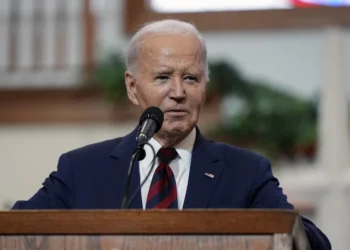Xi Jinping has a problem. Communist China is caught in an economic doom loop. Chinese economists understand that their country must rebalance its economy by increasing domestic consumption and reducing dependency on exports. In addition, China’s economists understand that the country must stop investing in projects that generate low and often negative returns.
But Xi, China’s all-powerful ruler, refuses to listen. He won’t embrace a massive fiscal stimulus with the goal of creating a basic social safety net, for example. He fails to recognize that with a social welfare system in place, Chinese households would be encouraged to spend more and to save less. Xi fears that even a basic welfare system would breed laziness. The result is that households continue to save heavily and China continues to rely on exports to generate jobs and economic growth.
It’s a recipe for failure.
After all, China is now caught in a deflation and demographic doom loop. Deflation has become embedded in the economy. Household consumption is weak. Households know that prices are falling, so they defer consumption on the expectation of even lower prices. To break out of this ultimately destructive economic trap, China should reflate the economy with a “helicopter drop” of money on households. But Xi says “no.” And Xi always and everywhere in China has the final word.
China’s problems are a long time coming. China’s one-child policy turned out to be a demographic and economic disaster. As households shrank in size, so did national incomes. In 1983, household income fell from 62% of GDP to 44% of GDP today. Consequently, consumer demand has been steadily declining. In 1983, household consumption was about 53% of GDP. Today, it is just 39% of GDP, the lowest among wealthier nations. In the United States, household consumption accounts for around 70% of GDP. Weak domestic consumption makes China dependent on a massive trade surplus in manufactured goods.
Peng Sen, president of the China Society of Economic Reform, said last March that China should push to boost consumption as a share of GDP to 70% by 2035. Peng Sen’s organization is affiliated with the National Reform and Development Commission, China’s central economic authority. But it is highly unlikely that Chinese household consumption will increase as a percentage of GDP. Rather, all signs point to China doubling down on manufacturing and exporting higher value-added goods into the global economy.
China is preparing its next Five-Year Plan, which will begin in 2026. Under the projected policy, manufacturing as a share of GDP would remain stable, with current levels over the five-year period, 2026-2031. Moreover, under the proposed plan, China intends to move up the value-added curve. China intends to compete head-to-head with the U.S. and other advanced manufacturing nations, such as Germany, Japan, South Korea, and Taiwan. The plan would focus on exporting high-value-added technology goods, including chip-making equipment.
But because China’s domestic consumption of advanced manufacturing products will be insufficient to absorb domestic production, China will continue to focus on exports. Over the next five years, trade friction between China and the U.S. will increase. In addition, trade tensions between China and Western Europe and the advanced economies of Asia will only grow. China will engage in economic aggression to push advanced technology products onto other countries. China is infamous for its “Wolf Warrior“ Diplomacy.
CPAC HUNGARY: THE AGE OF CHINESE COMMUNIST PARTY COLLABORATORS IS HERE
China’s doubling down on exports of advanced manufacturing goods presents President Donald Trump with a slam-dunk opportunity to hamstring China’s economy by working with allies to just say “no” to Chinese exports that would destroy industries across the globe. Sadly, Trump prefers to alienate allies.
China is handing Trump a gift. But the chances that Trump will accept the gift are next to nil.

















